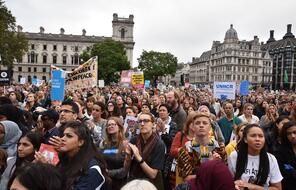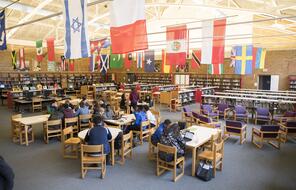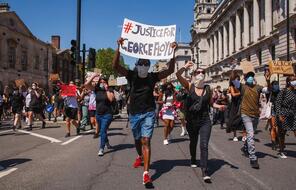Reading
Changing Demographics in Boston and Its Schools (en español)
An overview of the changing demographics in Boston and its schools. This resource is in Spanish.
Since the battles over desegregation in the 1960s and 1970s, the population of Boston and its school system has changed. Since desegregation in the 1970s:
- Schools have become more representative of the racial and ethnic composition of the city as a whole. In 2019, about 50% of the schools had approximately the same racial and ethnic composition as the city as a whole. In 1967, 15% did. 1
- The racial and ethnic composition of the city has changed.
- The overall population of Boston has grown, fueled mostly by immigrants from Latin America, the Caribbean, and Asia. 2
- At the same time, the white population of Boston has shrunk. In the decades following the battles over desegregation, thousands of white families left Boston. In 1970, nearly 80% of Bostonians were white, according to the US census, while in 2020 about 45% identified that way.
- The number and percentage of white students in Boston Public Schools has also declined significantly. In 1967, 73% of students in BPS were white. In 2019, 13% were white. This drop reflects both the city’s shrinking white population and the fact that after the desegregation process, many white families enrolled their children in private or parochial (Catholic) schools.
- The composition of the Boston Public Schools student body reflects these patterns. In 2019, the system was 42% Latinx, 35% Black, 13% white, 7% Asian, and 3% “other.” 3
- The teachers in Boston Public Schools have become a significantly 4 more racially and ethnically diverse group, but they still do not reflect the diversity of the student body. In 2017, 85.9% of BPS students were “non-white,” but only 41.8% of teachers were. 5
- Since 1980, when Judge Garrity was still in control of the schools, segregation has increased.
- In the 2000s, Boston placed increased emphasis on assigning students to schools close to their own neighborhoods. Because Boston remains a city that is highly segregated by race and class, this has led to resegregation in the schools.
- When a school has a student body that is 90% or more students of color, researchers consider it “intensely segregated.” The percentage of students of color in Boston who attended “intensely segregated” schools in 1980 was 2%. In 2000 it rose to 52%. In 2019 it was 66%. 6
- With fewer white students attending Boston Public Schools, it is more difficult to achieve “racial balance” in the schools, as defined by the Racial Imbalance Act that was passed in the 1960s.
- 1Peter Ciurczak, Antoniya Marinova, and Luc Schuster, Kids Today: Boston’s Declining Child Population and Its Effect on School Enrollment (Boston Indicators and the Boston Foundation, 2020), 32.
- 2Mark Melnik, Gail Waterhouse, and Luc Schuster, Changing Faces of Greater Boston: Overview and Regional Analysis (Boston Indicators and the Boston Foundation, 2019), 12.
- 3Ciurczak et al., Kids Today, 21.
- 4Ciurczak et al., Kids Today, 17–21.
- 5Melnik et al., Changing Faces of Greater Boston, 20.
- 6Ciurczak et al., Kids Today, 27.
The resources I’m getting from my colleagues through Facing History have been just invaluable.
—
Claudia Bautista, Santa Monica, Calif













